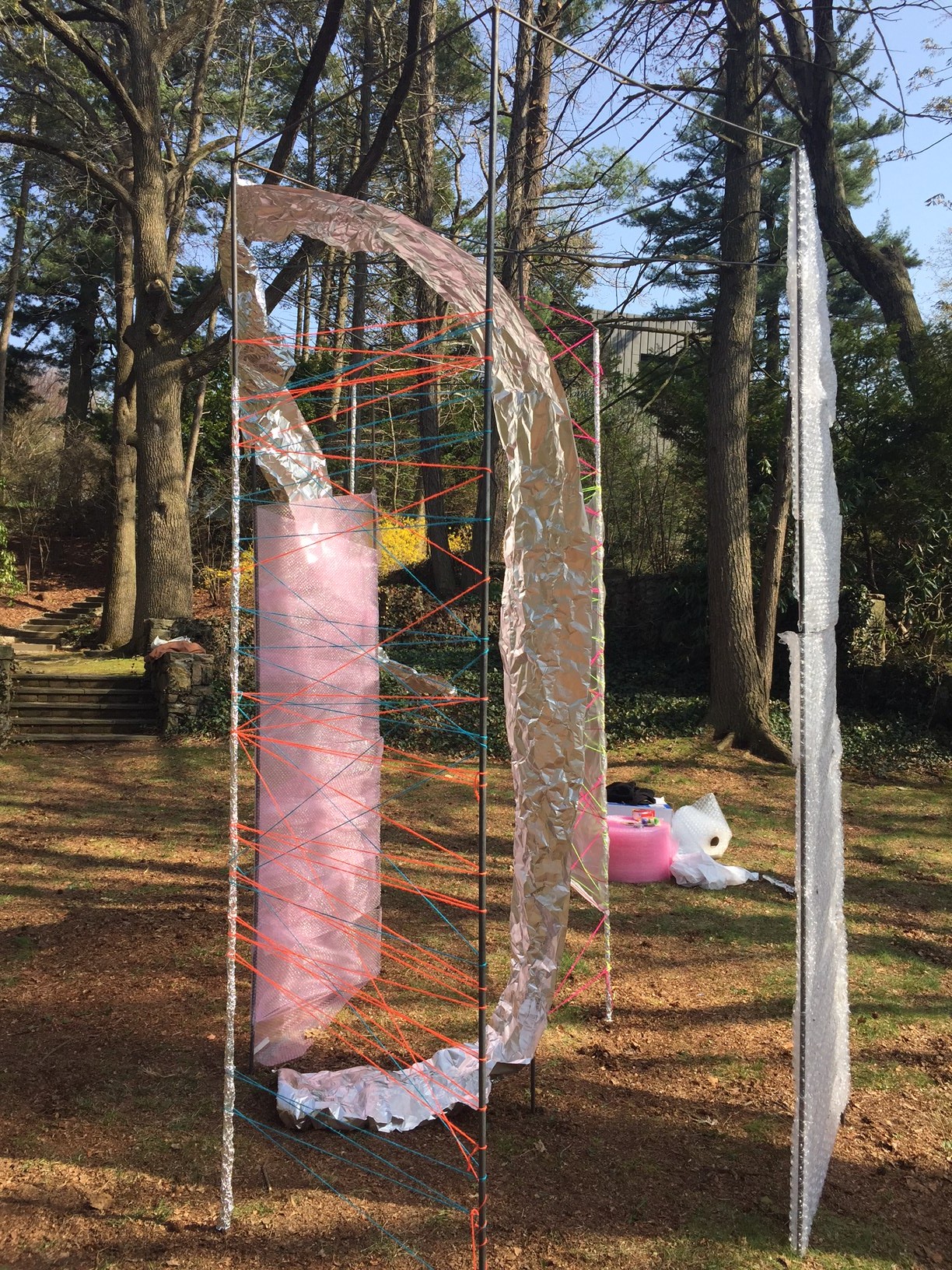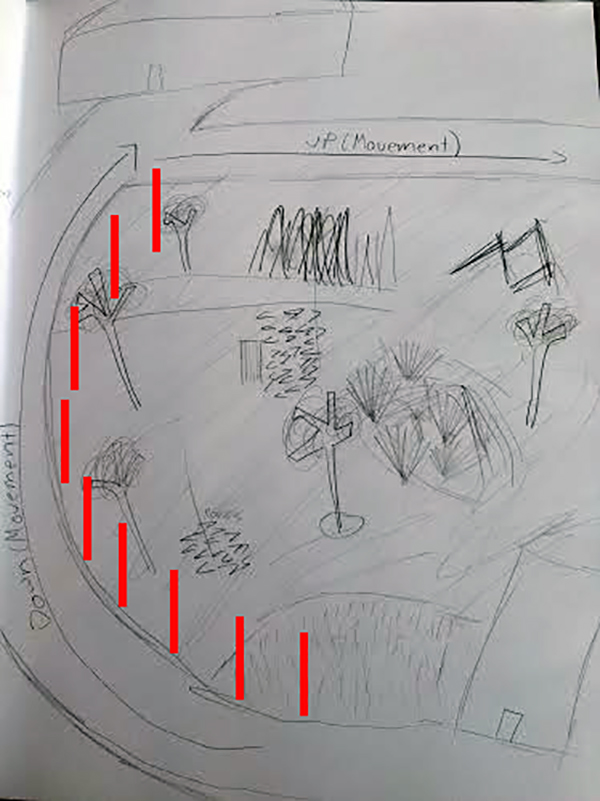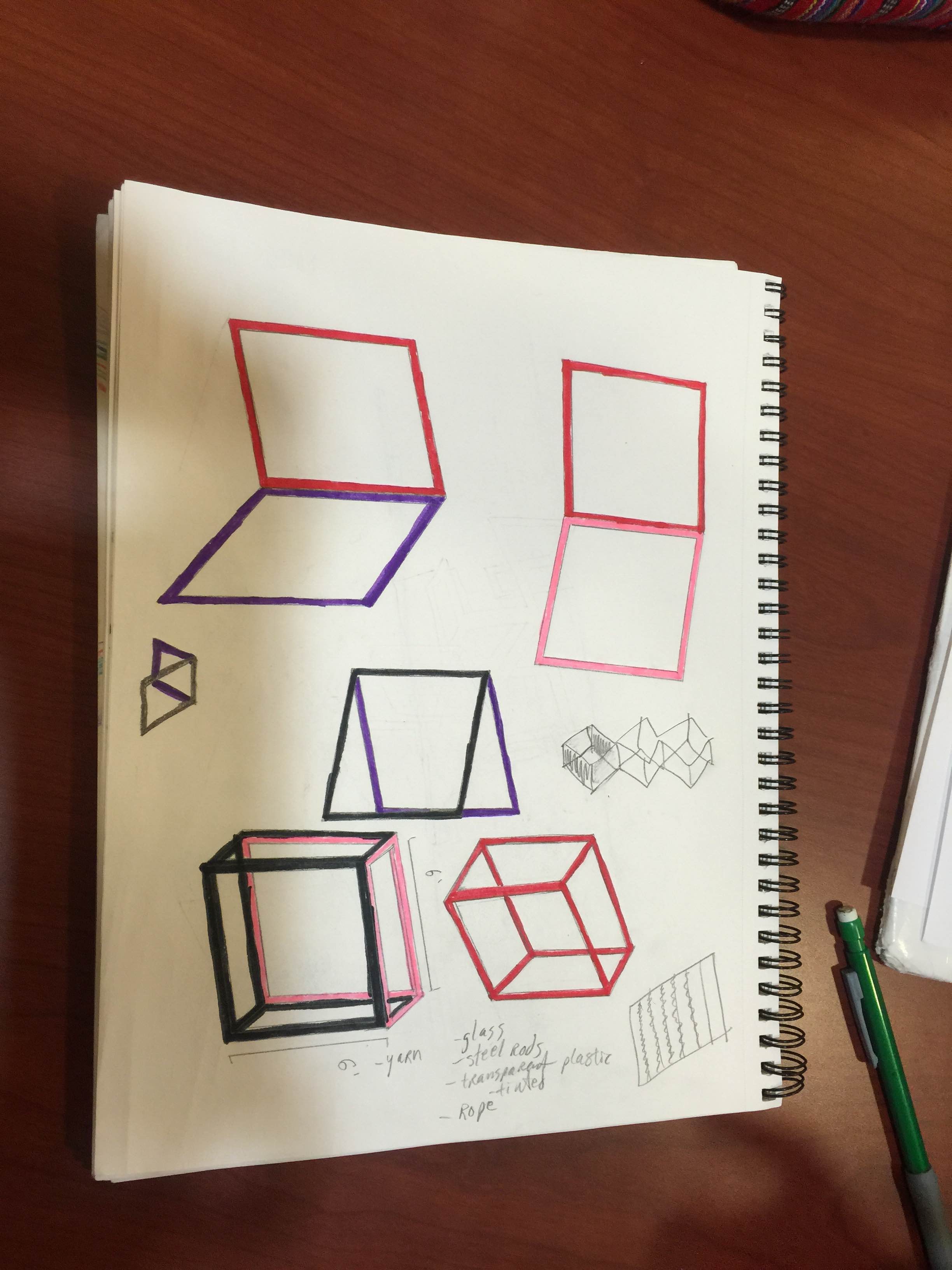Categories
Tag: psychogeography
Mapping the Invisible: Visionary Post Mortem
We agreed on the idea of playing with elevation and maze. Our site is Marshall Field. Since the site is surrounded by different elevations(people can sort of see the place from the back door of Heimbold) The viewers are able…
Mapping the Invisible: Revolutionaries — (Counterrevolutionary Splinter Group?): Post-Mortem
[The site seen from the main path] My marker offers a sort of communication in an otherwise unused space on campus, combining dissonant elements such as the technology of the QR code compared to the simple wood. Additionally, the QR…
Mapping the Invisible: Conference Project Draft #1 — Campus Graffiti
Here’s a very early outline of what I have planned for my conference work. I have noticed that many people use public wall space as a canvas for expressing themselves around campus. People are compelled to speak their mind, and as a result there…
Mapping the Invisible: Surrealists — Post Mortem
We have visualised the methods of our ‘identity’ in three ways: firstly we drew attention to the most surreal thing in the space – the emergency pole; secondly we used the nature of a line to break up depth, distance…
Mapping the Invisible: Flaneur — Post-Mortem
Our group visualized our identity as the Flaneur in several ways. First, we wanted our work to embody the wandering qualities of the Flaneur by creating different visual attractions to guide the eye in a wandering fashion around the landscape….
Mapping the Invisible: Stalkers — Post Mortem
For our space, we chose make our sculpture more interactive by focusing on the vibe of the stalker rather than a specific, targeted act of stalking itself. Instead of designing a sculpture to be fixed on observing a particular place…
Mapping the Invisible: Site Specific — Flaneur
We are imagining our psychogeographic figure in this way The concept of the flaneur centers around walking and looking. The flaneur is an observer of the crowd, whilst simultaneously being a part of the crowd. We are using this figure…
Mapping the Invisible: Site-specific — Stalkers
We are imagining our psychogeographic figure in this way… We imagine the stalker as an distorted, attached, and elusive character whose behavior is fixed on a particular object or person. The stalker can blend in with society at large yet…
Mapping the Invisible: Visionary Sculpture
These are our basic ideas of several Mc Escher Cube we are designing right now.
Mapping the Invisible: Psychogeography — Surrealist
Five potential Psychogeograpic methods for exploring a space, in the spirit of surrealism: Retracing the path you took in a dream. Closing your eyes and trying not to walk in a spiral (as is your natural instinct). Going to everything that…
Mapping the Invisible: Psychogeography of the Visionary
1. Only walk through frames such as doorways, arches, awnings, etc. 2. Only walk uphill. 3. Walk only where others don’t. 4. Walk towards a fixed point until you can’t, then repeat. 5. Approach barriers, then jump over them. Repeat.
Mapping the Invisible: Psychogeography — Stalker
List of methods that were used to traverse the campus: -Being completely concealed/hidden and observing the area/people surrounding -Following someone/something consistently (ex: a person walking out of bates, following a squirrel) -Immersing one’s self in a crowded area in order…
Mapping the Invisible: Psychogeography of the Flaneur
Group 2: Mariko, Mikey, Hillary, Rebecca On our derive we utilized some techniques that would be common for a flaneur. 1) Aimless strolling 2) Observing passersby 3) Following people and things that struck our interest 4) Participating in flows of…
Cultural HiJack: Psychogeography of Historians
Today the Historians walked around the campus, from spaces around Heimbold to Marshall Field to the space near Tweed. As we walked, we discussed the unique histories of the buildings and the landscapes. We walked around Heimbold, considering what materials…








